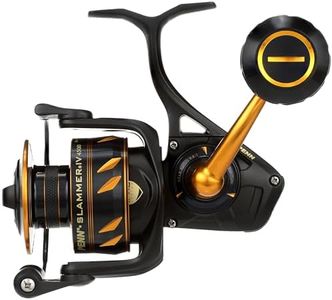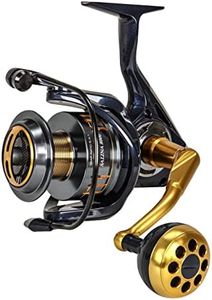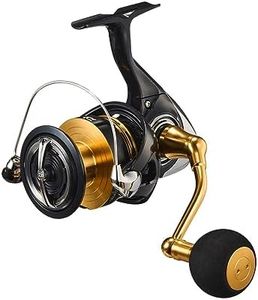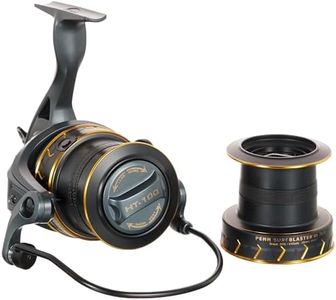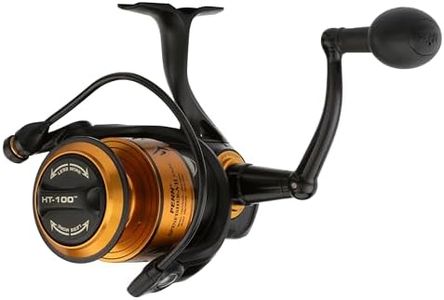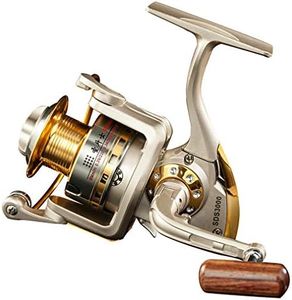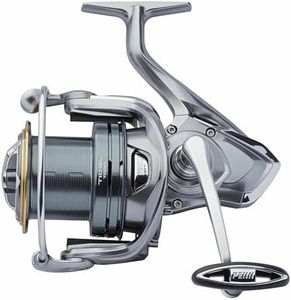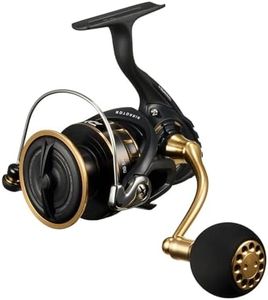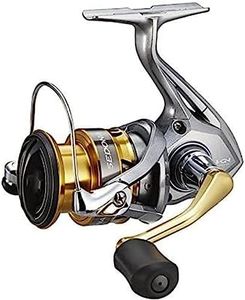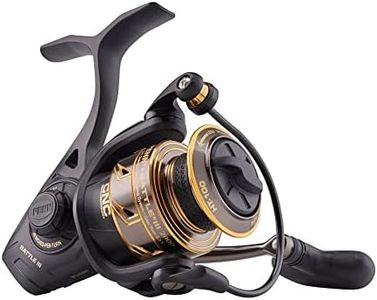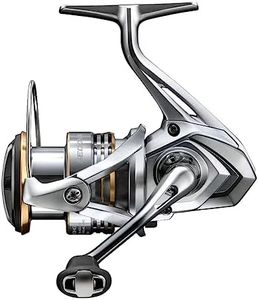We Use CookiesWe use cookies to enhance the security, performance,
functionality and for analytical and promotional activities. By continuing to browse this site you
are agreeing to our privacy policy
10 Best Saltwater Fishing Reels
From leading brands and best sellers available on the web.Buying Guide for the Best Saltwater Fishing Reels
Selecting the right saltwater fishing reel is crucial for both beginners and experienced anglers. Saltwater environments are harsh, with corrosive salt, strong fish, and demanding conditions. The best reel for you will depend on what kind of fish you want to catch, the technique or location you prefer, and your overall fishing style. By focusing on a few key specifications, you can ensure your reel will perform reliably and last for many trips to come.Reel TypeThe type of reel you choose determines its fishing purpose and how easy it is to use. The main categories are spinning reels, baitcasting reels, and conventional reels. Spinning reels are user-friendly and good for most casual saltwater fishing, especially for lighter lures and lines. Baitcasting reels are more precise and powerful, handling bigger fish but requiring a bit more skill. Conventional reels are best for offshore and deep-sea fishing, offering the most strength for large, hard-fighting species. Your fishing style and target species will guide you—choose spinning if you are just starting or want versatility, baitcasting for inshore precision and heavier fish, and conventional for the biggest challenges offshore.
Material and Corrosion ResistanceSaltwater is tough on equipment because it causes corrosion. The reel’s construction material determines its durability and how well it resists saltwater damage. Most saltwater reels use anodized aluminum, stainless steel, or high-quality graphite bodies and parts. Anodized aluminum offers a strong balance of lightness and corrosion resistance, stainless steel is tough but heavier, and graphite is lightweight and resistant but not as strong. If you fish often in saltwater or in rough conditions, prioritize reels marked as specifically corrosion-resistant and with sealed parts to prevent salt intrusion.
Drag SystemThe drag system is what controls how much resistance a fish feels when pulling on your line. A good drag allows you to fight big, strong fish without snapping your line. Drag strength is usually measured in pounds, and 'smoothness' is key—jerky drags can let fish escape. For lighter inshore fishing, a smooth drag with lower resistance is enough. For larger offshore fish, look for a reel with a higher, consistent drag rating. Always match the drag to the average size of fish you target—too much drag for small fish can break the line, too little for big fish can let them get away.
Line CapacityLine capacity tells you how much fishing line your reel can hold, measured in yards or meters for a certain line thickness (pound-test). Bigger fish run farther and stronger, so saltwater anglers often need more line than freshwater ones. Shallow line capacity is fine for small inshore species, but for offshore or strong-running fish (like tuna), you need a reel with higher line capacity. Pick a reel that comfortably holds more line than you expect to need, especially if fishing deeper waters or for fast, powerful fish.
Gear RatioGear ratio measures how quickly the reel picks up line; a ratio like 6:1 means the spool rotates six times for every turn of the handle. Higher ratios let you retrieve line faster—good for quick-moving lures or when you need to bring fish in rapidly. Lower ratios give you more power for cranking in heavy fish, but slower retrieval. If you fish with lures that need fast action, go higher (6:1 or above); for pulling up big bottom dwellers or trolling, a lower ratio (below 5:1) is stronger. Match your reel’s gear ratio to your fishing technique.
Ball BearingsBall bearings in a reel make the retrieval smooth and reduce wear. More bearings usually mean smoother operation, but quality is as important as quantity. For saltwater fishing, reels should use corrosion-resistant bearings (like stainless steel or sealed bearings) to keep out salt and sand. If you value a smoother feel, look for reels with more (and higher-quality) bearings, but for heavy-duty use, be sure those bearings are protected from saltwater.

